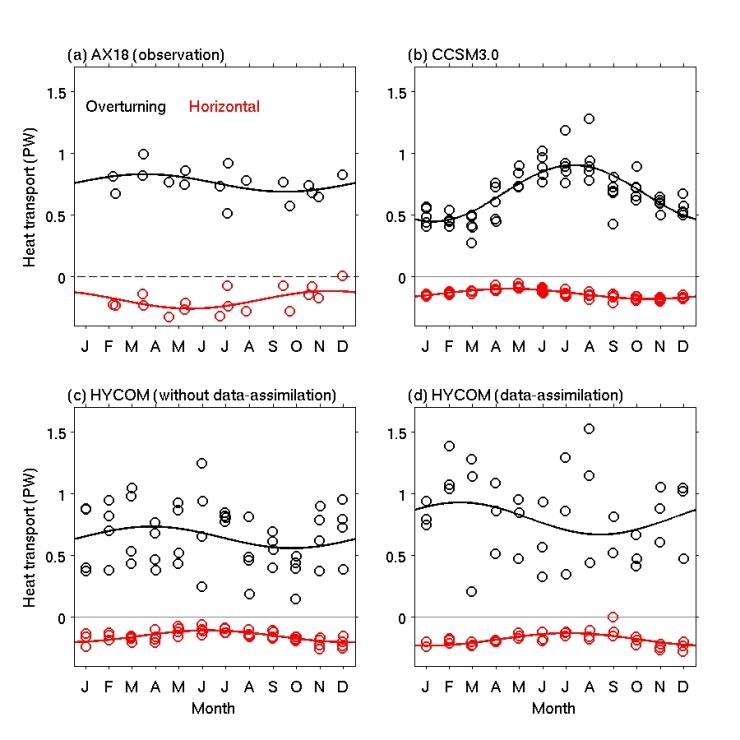Recent observations suggested that the contributions of Ekman and geostrophic components to the AMOC are in-phase on seasonal time scale in the North Atlantic at 26°N. In contrary, in the South Atlantic observations at 34°S indicate that they are out-of-phase (Figure). Whereas numerical model simulations show that the Ekman and geostrophic components are in-phase in both the North and South Atlantic. In addition, observations in both the North and South Atlantic suggested that, compared to the Ekman transport, the geostrophic transport plays an equal or more important role in the variations in the AMOC and the meridional heat transport (MHT). However, variations in the AMOC and MHT from models are predominately controlled by the Ekman component. Differences between model and observations are also seen in the partition of heat transport between the overturning and horizontal components. These aspects suggest that the model AMOC may response to forcing differently from that observed. Thus, it is important to quantify the role of the various processes in the AMOC and MHT variability, and to understand why numerical model simulations show a different response. A better understanding of the observed oceanic variability and its underlying mechanisms will ultimately improve our ability to predict the long-term climate variations.
The main objectives of this project are to investigate the mechanisms underlying the observed differences in the role of Ekman and geostrophic transports, as well as the overturning and horizontal transports to the Atlantic Meridional Overturning Circulation (AMOC) and MHT in both the North and South Atlantic, and to diagnose the causes for the inconsistency between their observed variability and that demonstrated in the numerical model simulations. To achieve these objectives hydrographic measurements will be analyzed to examine the AMOC and MHT on seasonal and interannual time scales. The results from data analyses will be compared with outputs from numerical model simulations. The analysis will yield an observational baseline for comparison with numerical models, which would result in the improvement of both ocean and coupled models used in climate simulations.
